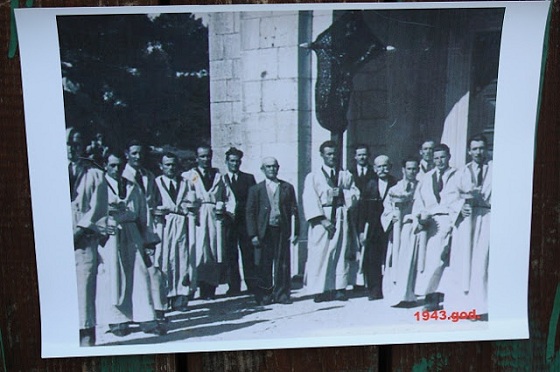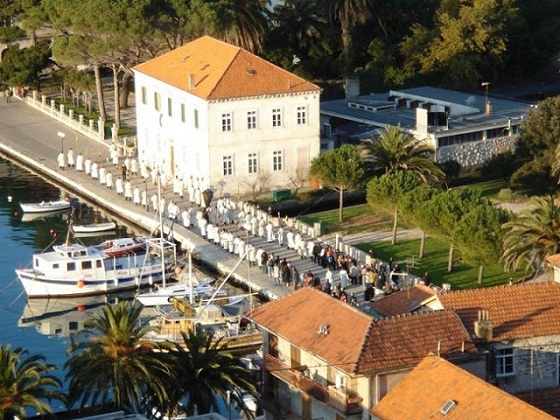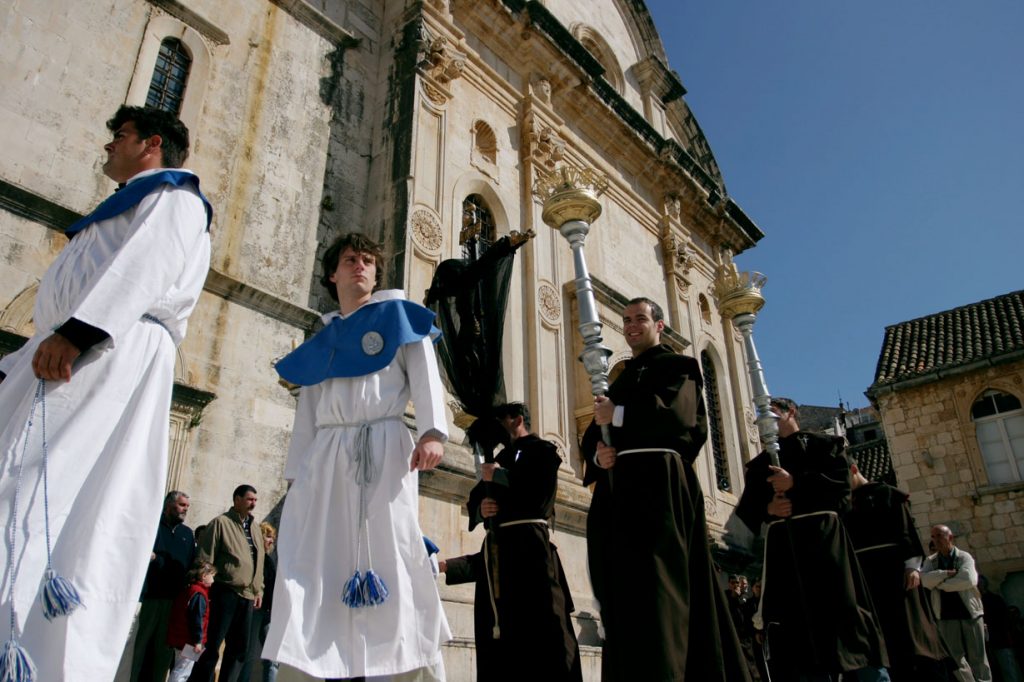This post is also available in: Croatian
Procession “Za Križen” (Following the Cross) is a unique religious rite that has been held continuously since the year 1658
There is no island sacral manifestation that is more monumental, and at the same time more mystical, touching and traditional than Hvar’s internationally known Procession “Za Križen” (Following the Cross)

It is not just a ritual in which the faith and piety of the people are manifested; in the case of Hvar, it is an event of the people that has been reflected in its continuity for five centuries. It takes place on the night of Maundy Thursday and Good Friday, and is performed as a religious sequence consisting of six processions that simultaneously move to six Hvar towns. And they never meet during this night-time procession.
The procession is a unique religious rite that has been held continuously since the year 1658, having experienced a partial interruption during World War II. Back in 1943, the Italian fascist authorities forbade the island to participate in the procession. Only the closest entourage participated in the event with the crossbearer. One year later, in 1944, the procession was banned by the Nazi authorities on the island.

At that time, in El Shatt, there were in fact a large number of people from Hvar who initiated that tradition from their native island and organised the procession in Egypt, with the consent of the British refugee camp command. Dining rooms represented churches, and even improvised altars were erected. About 8,000 people participated in the procession, including the Allied soldiers. The memory of this procession, apart from a few preserved photographs, has also been preserved by the crosses from El Shatto which are kept in the parish churches. The Procession of the Cross was inscribed on the UNESCO List of Intangible World Heritage back in 2009.

Once again this year, despite the coronavirus crisis, this unique religious event will take place from Good Thursday to Good Friday, on April the 9th, 2020. Only the closest entourage will participate in the event with the crossbearer, following all of the recommended social distancing measures.

The highest honour in this story is worn by the bearer of the cross, a key person carrying an 18-pound heavy cross.
This role is of great pride for every citizen of Hvar, and in life, sometimes with a wait of 20 years, only a few get to enjoy this rare opportunity. Most often as a fulfillment of a vow made to oneself, or at the family level.
In deep silence, filled with prayer, and deep religious worship, the cross bearers and believers, in a long continuous column, begin their journey with the procession, presenting in the most beautiful way a memorial of religious love always bound in suffering.

The procession simultaneously starts from the parishes of Jelsa, Pitve, Vrisnik, Svirce, Vrbanj and Vrboska. It has moved for centuries in a given trajectory, clockwise, without meeting and ending in the initial parish. If the processions were to encounter one another during that long night-time journey, the people would mark something like that as enormous bad luck. The procession also has its sacred music, an eighth-century octosyllable text of the Lamentations of the Virgin Mary, performed by cantors. The Procession Following the Cross is one of Hvar’s traditions, which every year records an increasing number of believers from the country and the world. They usually describe their participation in this event with the word – magnificent.
Photo: archive of tourist boards of the island of Hvar
More: TZ Jelsa
This post is also available in: Croatian
